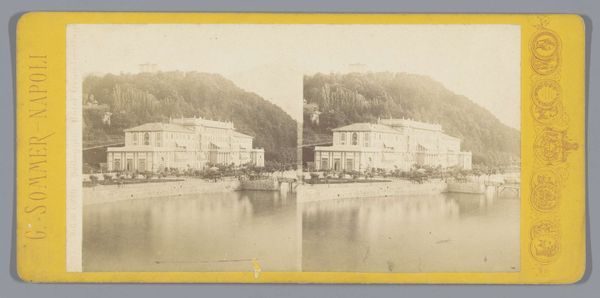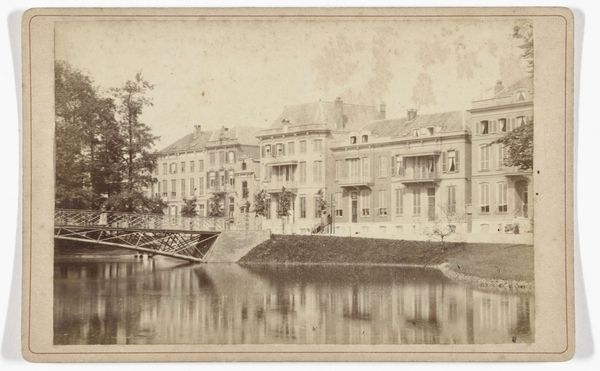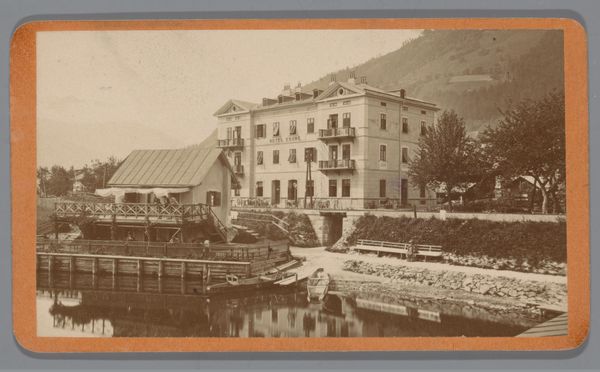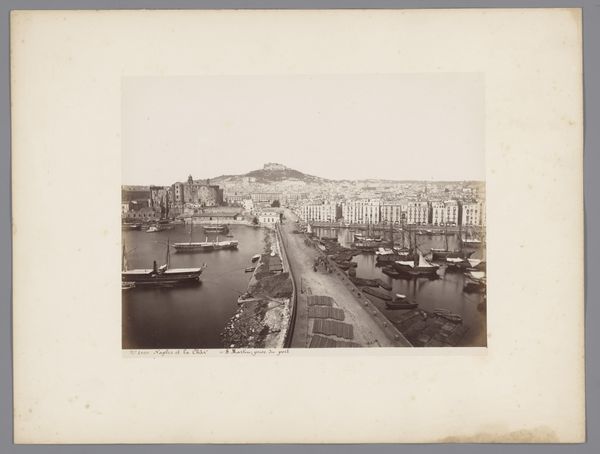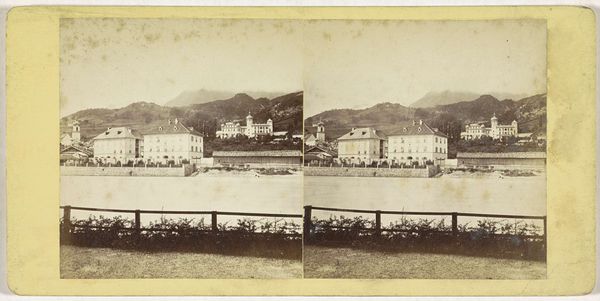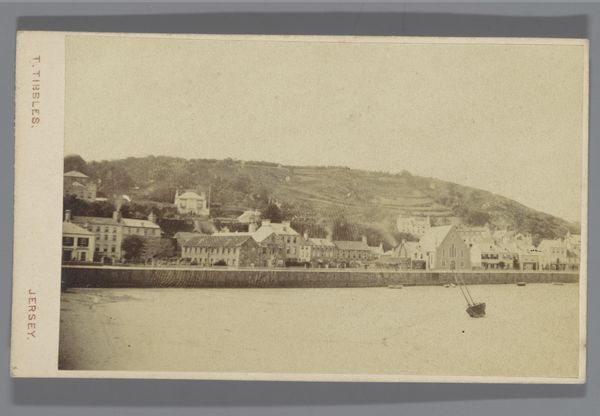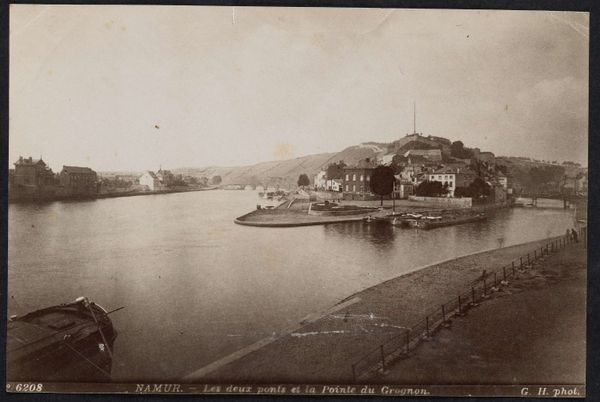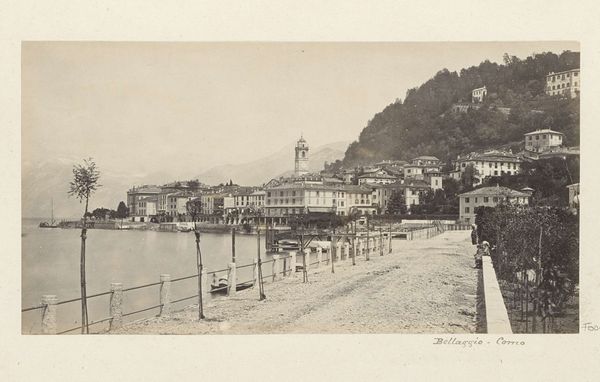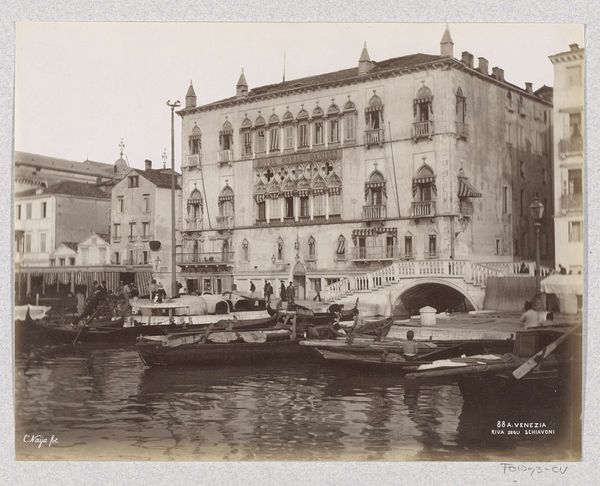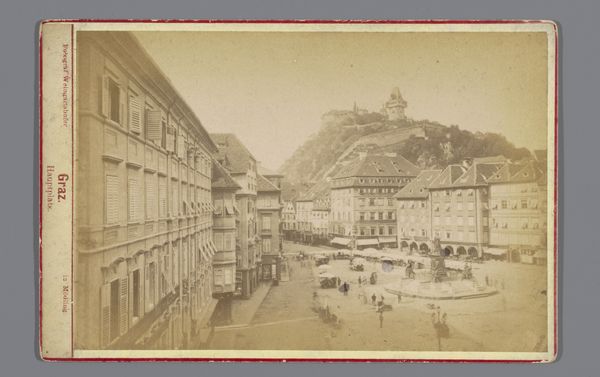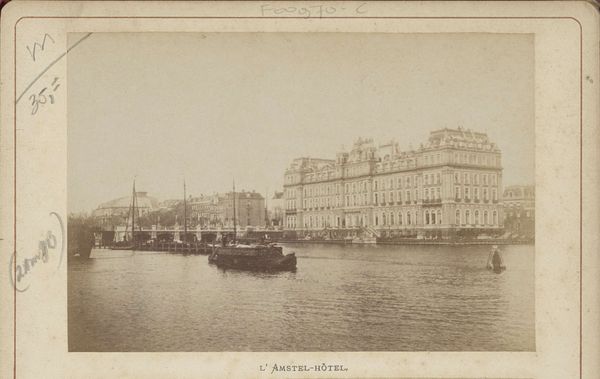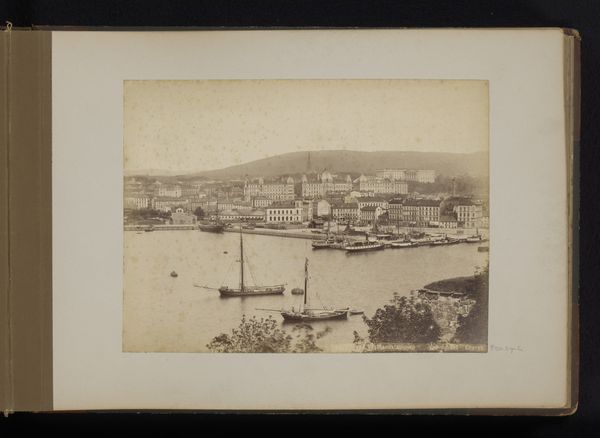
print, photography, albumen-print
#
16_19th-century
# print
#
landscape
#
photography
#
orientalism
#
cityscape
#
genre-painting
#
albumen-print
#
realism
Dimensions: height 107 mm, width 165 mm
Copyright: Rijks Museum: Open Domain
Curator: What strikes me immediately is the sepia tone lending a nostalgic air to this photograph, evocative of a bygone era of travel and leisure. Editor: Indeed, the mood is quite compelling! This albumen print, dating roughly from 1850 to 1900, presents Carlo Bosetti's "Gezicht op het Grand Hotel in Bellagio." The composition—the boat floating calmly on the water, reflecting the hotel—almost feels staged for the burgeoning tourist trade. Curator: Staged, but meticulously crafted to project an image of stately elegance, crucial to cementing Bellagio's position as a desirable destination for wealthy travelers in the 19th century. This view performs a cultural function as much as an aesthetic one. Editor: Absolutely, the craft of the albumen print—layering egg white and silver nitrate onto paper—became central to image-making, wasn't it? Think of the manual labour needed to prepare each print, and the rising culture of photobooks and souvenirs. Even the choice to present this idealized view over others surely speaks volumes! Curator: Precisely, the Grand Hotel became more than just a building; it symbolized aspiration and the curated experience of 'Italian' beauty. Its prominent display, reproduced across countless prints, reinforces specific hierarchies of taste and social standing in that period. Editor: But consider the subject of the photo— the boat! Who built it? Who maintains it? What kind of timber did the carpenters use? It feels to me like the material story embedded within these photographic prints tends to get overshadowed. Curator: I'd argue both readings are valid; this picture, presented for sale, reinforced social positions, but the printmaking process and use of chemical substances speaks to developing industry as much as aesthetics. The image is forever contextualised within societal norms of its time. Editor: A compelling argument; together these social and material threads make for a far richer, and perhaps more truthful, impression. Curator: I agree; there are so many angles one can approach from within its frame, aren’t there?
Comments
No comments
Be the first to comment and join the conversation on the ultimate creative platform.
